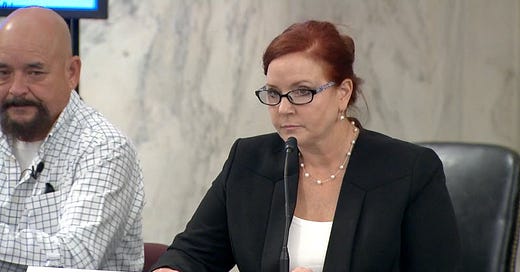2 studies of interest: Can povidone iodine gargle/mouth-rinse inactivate SARS-CoV-2 and decrease the risk of nosocomial and community transmission during the COVID-19 pandemic?
I include 2 separate studies to remind you that this nasal-oral virucidal wash is very effective to prevent infection and not only for COVID virus...I shared procedures earlier
1.) https://www.sciencedirect.com/science/article/pii/S1882761621000065?via%3Dihub
The Coronavirus disease in 2019 (COVID-19), also referred to as the novel ‘CoV19 (nCov19)’ is caused by a new coronavirus strain similar to Severe Acute Respiratory Syndrome (SARS-CoV-2). SARS-CoV-2 spreads via respiratory droplets, saliva, or direct contact. Therefore it is important to control the viral load in the saliva and respiratory secretions. One of the most simple and cost-effective measures that can be adopted by the public and healthcare professionals to prevent cross-contamination and community transmission, is the implementation of effective oral and throat hygiene. Recent evidence has confirmed that 0.5% povidone iodine (PVP-I) mouthrinse/gargle for 30 s can reduce SARS-CoV-2 virus infectivity to below detectable levels. PVP-I can even interrupt SARS-CoV-2 attachment to oral and nasopharyngeal tissues and lower the viral particles in the saliva and respiratory droplets. Thus, the use of PVP-I mouthrinse as a prophylactic measure has been advocated across the globe to reduce disease transmission. Although the efficacy of PVP-I against SARS-CoV-2 is proven, no review articles have yet discussed the evidence and mechanisms of PVP-I against the SARS-CoV-2. Thus, this paper highlights the rationale, safety, recommendations, and dosage of PVP-I gargle/mouthrinse as an effective method to decrease the viral loads during the pressing times of COVID-19.
2) https://www.sciencedirect.com/science/article/pii/S1532338221000592?via%3Dihub
Objectives
The oral cavity is potentially high-risk transmitter of COVID-19. Antimicrobial mouthrinses are used in many clinical preprocedural situations for decreasing the risk of cross-contamination in the dental setting. It is important to investigate the efficacy of mouthwash solutions against salivary SARS-CoV-2 in order to reduce the exposure of the dental team during dental procedures.
Aims
The aim of this in vivo study was to evaluate the efficacy of 2 preprocedural mouthrinses in the reduction of salivary SARS-CoV-2 viral load and to compare the results of the mouthwashes to a control group.
Materials and Methods
In this randomized-controlled clinical trial, studied group comprised laboratory-confirmed COVID-19 positive patients through nasopharyngeal swabs. Participants were divided into 3 groups. For 30 s, the control group mouthrinsed with distilled water, the Chlorhexidine group mouthrinsed with 0.2% Chlorhexidine and the Povidone-iodine group gargled with 1% Povidone-iodine. Saliva samples were collected before and 5 min after mouthwash. SARS-CoV-2 rRT-PCR was then performed for each sample. Evaluation of the efficacy was based on difference in cycle threshold (Ct) value. The analysis of data was carried out using GraphPad Prism version 5 for Windows. Kristal wullis and Paired t-test were used. A probability value of less than 0.05 was regarded as statistically significant.
Results
Sixty-one compliant participants (36 female and 25 male) with a mean age 45.3 ± 16.7 years-old were enrolled. A significant difference was noted between the delta Ct of distilled water wash and each of the 2 solutions Chlorhexidine 0.2% (P = .0024) and 1% Povidone-iodine (P = .012). No significant difference was found between the delta Ct of patients using Chlorhexidine 0.2% and 1% Povidone-iodine solutions (P = .24). A significant mean Ct value difference (P < .0001) between the paired samples in Chlorhexidine group (n = 27) and also in Povidone-iodine group (n = 25) (P < .0001) was found. In contrast, no significant difference (P = .566) existed before and after the experiment in the control group (n = 9).
Conclusion
Chlorhexidine 0.2% and 1% Povidone-iodine oral solutions are effective preprocedural mouthwashes against salivary SARS-CoV-2 in dental treatments. Their use as a preventive strategy to reduce the spread of COVID-19 during dental practice should be considered.




I was diagnosed with Covid Wednesday 12th Jan - strong infection in the nose - so used both saline to flush and then iodine gargling and nasal spray... it made a huge difference - thanks your post gave confidence to persist with it..
5 minutes later the load is low. But what happens later? Is it just transitory?